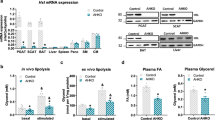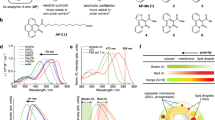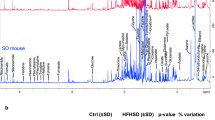Abstract
EARLIER work on the metabolism of fatty livers by Ennor1 showed that the oxygen consumption and the acetoacetic acid production of liver slices from guinea pigs poisoned with carbon tetrachloride is considerably in excess of normal. Since adenosinetriphosphate is essential for the oxidation of fatty acids2, it was considered of interest to determine a possible correlation between high-energy phosphate content and the increased metabolism of such livers.
This is a preview of subscription content, access via your institution
Access options
Subscribe to this journal
Receive 51 print issues and online access
$199.00 per year
only $3.90 per issue
Buy this article
- Purchase on SpringerLink
- Instant access to full article PDF
Prices may be subject to local taxes which are calculated during checkout
Similar content being viewed by others
References
Ennor, A. H., Austral. J. Exp. Biol. and Med. Sci., 20, 73 (1942).
Lehninger, A. L., J. Biol. Chem., 154, 309 (1944).
Author information
Authors and Affiliations
Rights and permissions
About this article
Cite this article
ENNOR, A., STOCKEN, L. Metabolism of Fatty Livers. Nature 159, 308 (1947). https://doi.org/10.1038/159308a0
Issue date:
DOI: https://doi.org/10.1038/159308a0
This article is cited by
-
Die energieverzehrenden,-liefernden und-�bertragenden Reaktionen des intermedi�ren Stoffwechsels
Die Naturwissenschaften (1953)



